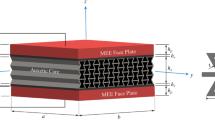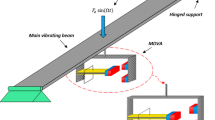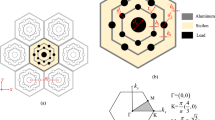Abstract
Piezoelectric energy harvesting is gaining huge research interest since it provides high power density and has real-life applicability. However, investigative research for the mechanical–electrical coupling phenomenon remains challenging. Many researchers depend on physical experiments to choose devices with the best performance which meet design objectives through case analysis; this involves high design costs. This study aims to develop a practical model using computer simulations and to propose an optimized design for a lead zirconate titanate (PZT)-based piezoelectric cantilever beam which is widely used in energy harvesting. In this study, the commercial finite element (FE) software is used to predict the voltage generated from vibrations of the PZT-based piezoelectric cantilever beam. Because the initial FE model differs from physical experiments, the model is calibrated by multi-objective optimization to increase the accuracy of the predictions. We collect data from physical experiments using the cantilever beam and use these experimental results in the calibration process. Since dynamic analysis in the FE analysis of the piezoelectric cantilever beam with a dense step size is considerably time-consuming, a surrogate model is employed for efficient optimization. Through the design optimization of the PZT-based piezoelectric cantilever beam, a high-performance piezoelectric device was developed. The sensitivity of the variables at the optimum design is analyzed to suggest a further improved device.
Similar content being viewed by others
References
M. Renaud, P. Fiorini, R.V. Schaijk, and C.V. Hoof, Smart Mater. Struct. 18, 49501 (2009).
S. Wei, H. Hu, and S. He, Smart Mater. Struct. 22, 105020 (2013).
B. Yang and K. Yun, Sens. Actuators, A 188, 427 (2012).
S.R. Platt, S. Farritor, K. Garvin, and H. Haider, IEEE/ASME Trans. Mechatron. 10, 455 (2005).
L. Moro and D. Benasciutti, Smart Mater. Struct. 19, 115011 (2010).
S.J. Hwang, H.J. Jung, J.H. Kim, J.H. Ahn, D. Song, Y. Song, H.L. Lee, S.P. Moon, H. Park, and T.H. Sung, Curr. Appl. Phys. 15, 669 (2015).
J. Granstrom, J. Feenstra, H.A. Sodano, and K. Farinholt, Smart Mater. Struct. 16, 1810 (2007).
Y. Uzun and E. Kurt, Sens. Actuators 192, 58 (2013).
Y. Uzun, S. Demirbas, and E. Kurt, Elektron. Elektrotech. 20, 35 (2014).
Y. Uzun, E. Kurt, and H.H. Kurt, Sens. Actuators 224, 119 (2015).
J. Zhao and Z. You, Sci. World J. 2014, 893496 (2014).
H. Kim, S. Lee, C. Cho, J.E. Kim, B.D. Youn, and Y.Y. Kim, J. Intell. Mater. Syst. Struct. 26, 1128 (2015).
M.S. Woo, K.H. Baek, J.H. Kim, S.B. Kim, D. Song, and T.H. Sung, J. Electroceram. 34, 180 (2015).
K. Kim, D. Song, Y.H. Jeong, J.H. Paik, S. Nahm, H.J. Kim, and T.H. Sung, J. Electroceram. 34, 109 (2014).
M.A. Ahmad and H.N. Alshareef, J. Electron. Mater. 40, 1477 (2011).
M.A. Ahmad, J. Electron. Mater. 43, 452 (2014).
J.E. Kim, H. Kim, H. Yoon, Y.Y. Kim, and B.D. Youn, Int. J. Precis Eng. Manuf. Green Technol. 2, 51 (2015).
H. Rajabi and A. Darvizeh, Sci. Iran. B. 21, 587 (2014).
B. Behjat, M. Salehi, A. Armin, M. Sadighi, and M. Abbasi, Sci. Iran. B 18, 986 (2011).
H.J. Jung, Y. Song, S.K. Hong, C.H. Yang, S.J. Hwang, S.Y. Jeong, and T.H. Sung, Sens. Actuators 222, 314 (2015).
B.D. Youn, B.C. Jung, Z. Xi, S.B. Kim, and W.R. Lee, Comput. Methods Appl. Mech. Eng. 200, 1421 (2011).
B.C. Jung, H. Yoon, H. Oh, G. Lee, M. Yoo, B.D. Youn, and Y.C. Huh, Struct. Multidiscp. Optim. 53, 161 (2015).
R.H. Myers and D.C. Montgomery, Response Surface Methodology: Process and Product Optimization Using Designed Experiments, 1st ed. (New York: John Wiley & Sons Inc, 1995), pp. 16–78.
J. Park and I.W. Sandberg, Neural Comput. 3, 246 (1991).
J. Sacks, S.B. Schiller, and W.J. Welch, Technometrics 31, 41 (1989).
J. Park, J. Stat. Plan. Inference 39, 95 (1994).
M.E. Johnson, L.M. Moore, and D. Ylcisaker, J. Stat. Plan. Inference 26, 131 (1990).
R. Cudeck and M. Browne, Multivar. Behav. Res. 18, 147 (1983).
Acknowledgement
This work was supported by the *Energy Efficiency & Resources Core Technology Program of the Korea Institute of Energy Technology Evaluation and Planning (KETEP), granted financial resource from the Ministry of Trade, Industry & Energy, Republic of Korea (No. 20142020103970).
Author information
Authors and Affiliations
Corresponding author
Rights and permissions
About this article
Cite this article
Kim, J., Park, S., Lim, W. et al. Design Optimization of PZT-Based Piezoelectric Cantilever Beam by Using Computational Experiments. J. Electron. Mater. 45, 3848–3858 (2016). https://doi.org/10.1007/s11664-016-4497-2
Received:
Accepted:
Published:
Issue Date:
DOI: https://doi.org/10.1007/s11664-016-4497-2




